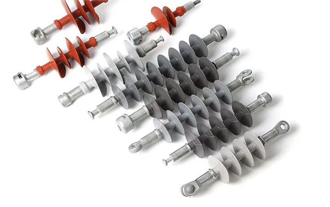Key Issues For The Future Of Composite Insulators
China's power industry has experienced rapid growth since the 1980s, and with the latest developments in UHV AC and UHV DC lines, power generation and the length of the country's overhead networks have proliferated.
The development of insulators cannot be seen in isolation from that of the whole power industry. For example, the rapid growth of overhead line length and the transfer to a higher voltage level not only bring great demand for insulators but also require higher performance of insulators. Due to its excellent wet and pollution flashover performance, light weight, high strength to weight ratio, easy to transport and install, anti-damage, and other advantages, the application of silicone rubber composite insulators in China has achieved significant growth.
The use of composite insulators has also increased significantly worldwide and, based on experimental applications, now dominates all UHV lines. Moreover, significant improvements have been made in both manufacturing and testing. Nevertheless, given the rapid development of this technology, the key issue for the future of composite insulators remains that power companies remain confident in their expected service life and performance. This means that the future development of composite insulators will depend on: the availability of suitable test methods to verify long-term performance and develop the best materials and maintenance techniques.
Although brittle fracture occurs in a very small percentage of all composite insulators used, it can cause sudden conductor drop with serious consequences. Normally, the insulators affected by this will fail after only a few months or years of service under low mechanical loads. In this case, the fractured surface is usually flat and smooth.
Due to the fierce competition, the relative market price of silicone rubber insulator is extremely attractive compared with other types nowadays. This is especially true at higher voltages. For example, in China, the cost comparisons for porcelain, glass, and composite insulators are 110 kV to 1000 kV AC, ±500 kV, and ±800 kV DC. The cost per string insulator is calculated based on the application in a general service environment. It is easy to see that the price of silicon-rubber composite insulators is always much lower than that of porcelain insulators or glass insulators, and this cost advantage increases with the improvement of voltage or mechanical level. In the case of direct current, the cost difference is even greater.
Although low acquisition costs are one of the advantages offered by silo composite insulators, the low price may indicate that lower quality and poor long-term performance may increase the risk. According to China's experience with HTV silicone rubber services, some insulators have been running for more than 15 years without problems, but many early products must be replaced within 10 years. Since today's service life is usually less than 20 years, this may affect users' perception and confidence in composite insulators. A new generation of SR composite insulators is expected to last longer. However, because utilities want to buy reliable and inexpensive insulators, and because manufacturers need to control production costs, current insulator standards are insufficient to meet all these benefits.

Information technology will certainly change the development of the power grid. For composite insulators, two possible features may satisfy some of the requirements of the smart grid in the future. Firstly, large-scale and real-time online status monitoring is carried out in substations and overhead lines. New capabilities can be added to composite insulators to obtain and transmit data. The other is fault prediction based on big data. Each insulator needs its own QR code to obtain all information, such as manufacturing and material details, running time, maintenance information, etc. With this data, quality maintenance will become digital, and fault prediction can be based on big data.
+86 319 878 9350
+86 156 1304 7999
+86 319 878 9350
NanYan, DongHuan Road, Shahe, Hebei China
Copyright © Hebei Yipeng Line Equipment Co., Ltd. All Rights Reserved. | Sitemap Powered By 
